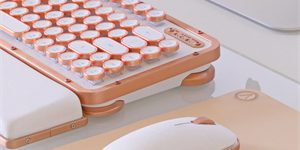Intro: In the pursuit of productivity, every element of your workspace matters, and the mouse pad is no exception. While often seen as a minor accessory, the choice of mouse pad material can significantly impact your productivity. In this article, we’ll delve into the science behind mouse pad materials and how they can boost your efficiency.
Body:
- Material and Friction: The material of your mouse pad affects the friction between the mouse’s sensor and the surface. Low-friction materials, like hard plastic, enable faster mouse movements, making them suitable for tasks that require speed and efficiency, such as data entry.
- Control and Precision: On the other hand, high-friction materials, like cloth, offer better control and precision. This is ideal for tasks that demand accuracy, such as graphic design or photo editing.
- Ergonomics and Comfort: Materials with gel or memory foam wrist rests provide ergonomic support, reducing wrist strain during long work sessions. Enhanced comfort can lead to increased productivity and fewer breaks.
- Durability and Longevity: The choice of material also affects the mouse pad’s durability. High-quality materials are less likely to wear out quickly, ensuring consistent performance over time.
- Customization: Some professionals benefit from custom mouse pads with branded designs or specific patterns tailored to their work. Customization can boost personal and team morale, enhancing productivity indirectly.
Conclusion: The material of your mouse pad is not a trivial choice but a strategic one that can impact your productivity. By understanding the science behind mouse pad materials and selecting the right one based on your specific tasks and preferences, you can optimize your workspace for peak efficiency.







